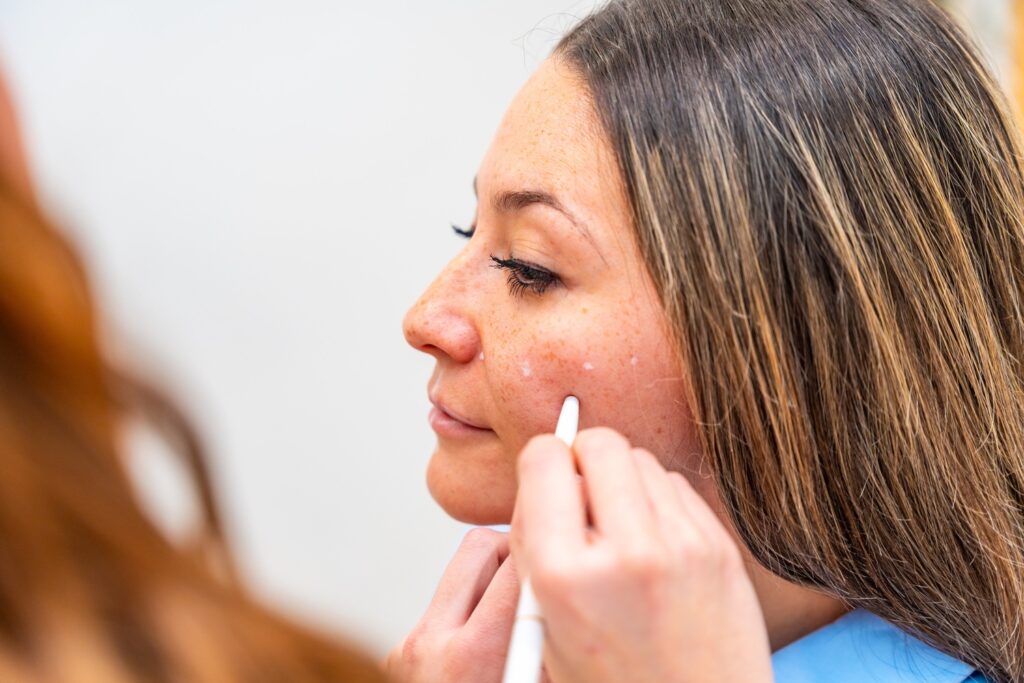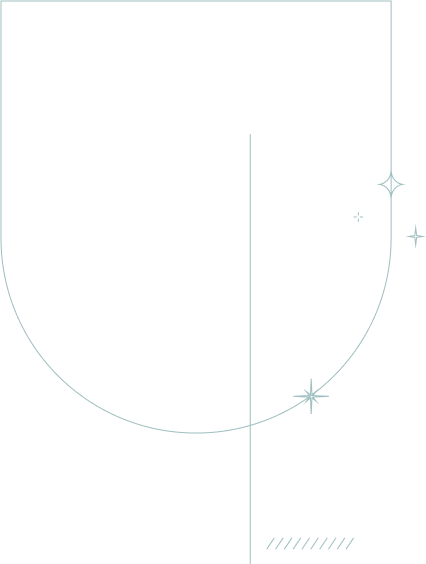
Around 10% of Australians suffer from rosacea, a common skin condition. With rosacea, skin on the nose, cheeks, forehead, and chin appears red and inflamed with visible broken blood vessels.
Papulo-pustular rosacea is a type of rosacea in which red bumps form close together and may appear like acne. Rosacea skin feels hot to the touch and may feel very itchy. Papulopustular rosacea may be triggered by exposure to extreme temperatures, stress, eating certain foods and beverages, and medications, among other things.
People with papulo-pustular rosacea need accurate information and a correct diagnosis to treat their symptoms. Although rosacea has no cure, effective treatments are available to control its symptoms.
What is Papulo-pustular Rosacea?
People with papulo-pustular rosacea are often mistaken for having acne. This type of rosacea may look like acne because of its reddish and elevated appearance, but the red bumps in papulo-pustular rosacea may form close together and contain pus.
The bumps also feel hot to the touch as the skin is inflamed. During breakouts, the skin becomes very inflamed and itchy, and those with lighter skin may appear flushed. Meanwhile, people with rosacea but with darker skin may find their skin turning yellow or dusty brown during breakouts.
People with papulo-pustular rosacea always have bumps on their skin. These bumps develop a textured appearance, usually like plaques or elevated skin. As with other forms of rosacea, the cause of papulopustular rosacea remains unknown, but experts believe that it may be due to genetics and exposure to environmental triggers.
Papulo-pustular rosacea is common in Australia, especially among people with fair skin and northern European or Celtic heritage. However rosacea can also occur in Asian and darker skin toned people. Rosacea is generally more common in women but can affect both sexes and people from all ethnicities.
Common Symptoms of Papulopustular Rosacea
Skin with papulopustular rosacea typically experiences the following symptoms.
- Redness: The Skin on the nose, cheek, forehead, and chin appears red. People with fair skin have pronounced redness, while darker skin have yellowish or brownish bumps. This redness becomes more intense, especially during breakouts or exposure to triggers.
- Pustules: The skin is red and bulging in patches, sometimes filled with yellowish pus. This is also seen in the skin with acne or pimples.
- Bumps: Skin bumps are formed close together, causing an irregular skin texture. They are all over the face, especially on the temples, chin, and nose.
- Inflammation: The skin is also warm or hot to the touch. Papulopustular rosacea is very itchy, especially when exposed to triggers. Skin appears elevated, swollen, and intense.
Treatments for papulopustular rosacea focus on managing symptoms, avoiding triggers, and helping patients control their condition and improve self-confidence.
What Causes Papulo-pustular Rosacea?
The cause of papulo-pustular rosacea remains unknown; however, people with a known family history of rosacea may be more susceptible. Vascular hypersensitivity and an overblown response to the Demodex mite (which we all have as part of our normal skin microbiome) are the main causes of rosacea. Also, exposure to certain environmental triggers, diet, and products may trigger symptoms.
Here are the most common papulopustular rosacea triggers:
- Exposure to sunlight, wind, and extreme temperatures
Strenuous exercise and high-stress
- Taking some medications and supplements
- Eating spicy foods or drinking hot beverages
- Eating foods containing cinnamaldehyde, such as cinnamon, chocolate, tomatoes, citrus fruits, and some oil
- Drinking alcohol
- Using hair products such as hairspray
- Using skin products containing alcohol, menthol, acids, fragrance, exfoliants, and certain essential oils (eucalyptus and peppermint)
- Presence of intestinal bacteria H. pylori
- The presence of a skin mite called Demodex, which carries the bacterium Bacillus oleronius
The triggers of papulo-pustular rosacea vary from person to person. If your symptoms are worsening, consult a specialist dermatologist such as Dr Ritu.
Diagnosing Papulo-pustular Rosacea in Australia
A dermatologist will diagnose papulo-pustular rosacea before treatment. They will start by taking your medical history and checking your family history for rosacea and other skin conditions. A dermatologist will also examine your skin closely, identifying signs and symptoms of papulo-pustular rosacea. Carefully reviewing your skin will rule out other skin conditions, such as acne or pimples.
They will note your symptoms and ask about things that worsen your condition, such as the weather, food, beverages, medication, certain products, etc. These steps can help them identify specific triggers that lead to rosacea breakouts.
You must see a specialised dermatologist for an expert diagnosis of papulo-pustular rosacea. By correctly diagnosing this form of rosacea, your dermatologist can prescribe the most effective treatment to control your symptoms.
Note: Recall and write down your symptoms, frequency and severity, and possible triggers. This can help your dermatologist diagnose and treat your symptoms.
Effective Treatments for Papulo-pustular Rosacea
Treatment for papulo-pustular rosacea is about controlling its symptoms. A dermatologist may recommend a combination of the following:
Topical medications
Ivermectin cream: This reduces the number of the Demodex mite on the skin which is a trigger for the inflammation that occurs in rosacea.
- Metronidazole cream or gel: This is a common but less effective prescription treatment for papulo-pustular rosacea and other types of rosacea, targeting lesions and redness. Metronidazole is applied to the affected areas to reduce inflammation and prevent bacterial growth. This medication is well-tolerated but should only be used under the guidance of a dermatologist, as it may cause burning, itching, or dryness.
- Azelaic acid cream or gel: This helps calm inflamed skin and helps kill bacteria that worsen acne-like lesions in papulopustular rosacea. Azelaic acid may cause mild and temporary burning, itching, stinging, and dryness.
Oral medications
Oral antibiotics such as Doxycycline or Minocycline: Antibiotics help reduce inflammation and control symptoms such as redness and swelling. These also help decrease the number and severity of papules and pustules.
Isotretinoin: This may be used in the most severe or recalcitrant rosacea.
Laser treatments
- Broadband Light (BBL): This treatment shuts down broken blood vessels, reduces pigmentation, and promotes collagen production. BBL treatments improve skin texture, creating a more even complexion.
- Picosecond Laser: This type of laser uses short pulses of light to treat pigmentation, scarring, and age spots. Treatments are short, only 15 to 20 minutes long, and they target the blood vessels responsible for redness.
- ND-Yag Vascular Laser: This advanced laser system is used for vascular lesions, reducing redness and inflammation in many types of rosacea, especially inflammatory lesions in papulopustular rosacea.
Lifestyle changes
Part of papulopustular rosacea treatment is making critical lifestyle changes such as the following:
- Use non-irritating skin care products, including oil-free or non-comedogenic products.
- Use sunscreen and wear hats when going outside.
- Keep your face cool to reduce redness, flushing, and discomfort.
- Avoiding corticosteroid creams or ointments on your face. These will make your rosacea worse.
- Managing your diet to reduce symptoms. Include the foods that prevent rosacea flare-ups: fish, eggs, nuts and seeds, fibre-rich foods rich in zinc, and fermented foods.
How Dr Refresh Can Help Manage Your Rosacea
Dr Refresh can help you manage your rosacea symptoms through a personalised and compassionate approach. Our patients receive tailored treatments formulated accordingly to the patient’s unique symptoms, triggers, and needs.
To explore your options, schedule a consultation with Dr Ritu and her specialist staff today. Contact Dr Refersh at (02) 8014 6500 or book a consultation online.
Frequently Asked Questions About Papulopustular Rosacea
1. Is papulopustular rosacea curable?
There is no cure for papulopustular rosacea; only treatments help manage symptoms such as redness and inflammation and control the number of pustules and papules.
2. How quickly do treatments show results?
Treatments such as oral and topical medications and antibiotics work to control the symptoms of papulopustular rosacea, and results depend on the severity of the patient’s condition. Meanwhile, laser procedures used to remodel and revitalise skin may take 2 to 4+ sessions before seeing results.
3. Does diet affect rosacea?
Yes, some foods and beverages can trigger rosacea and should be avoided. These include foods that contain cinnamaldehyde (cinnamon, citrus, tomatoes, and chocolates), spicy dishes, alcohol, and hot beverages.
4. Can rosacea worsen if left untreated?
Yes, symptoms such as redness and visible blood vessels can worsen over time if not treated. These can lead to skin thickening, acne, and other skin conditions.
5. Are there any home remedies for managing rosacea?
Home remedies for rosacea include avoiding triggers, practising gentle skin care, and avoiding stress.

